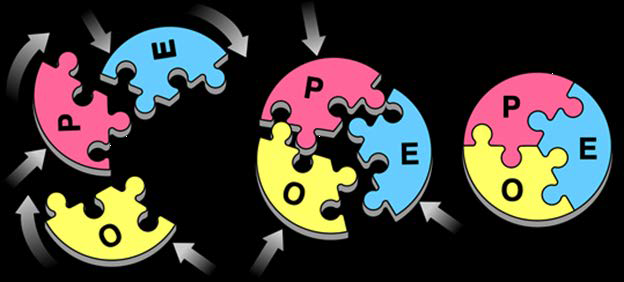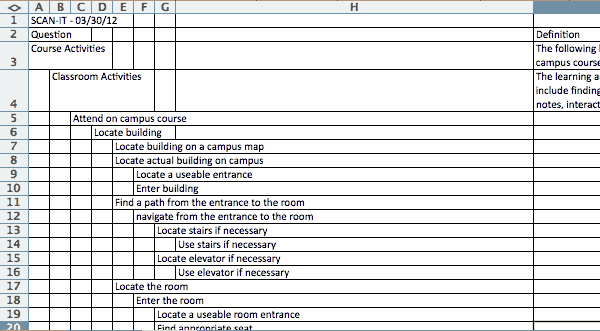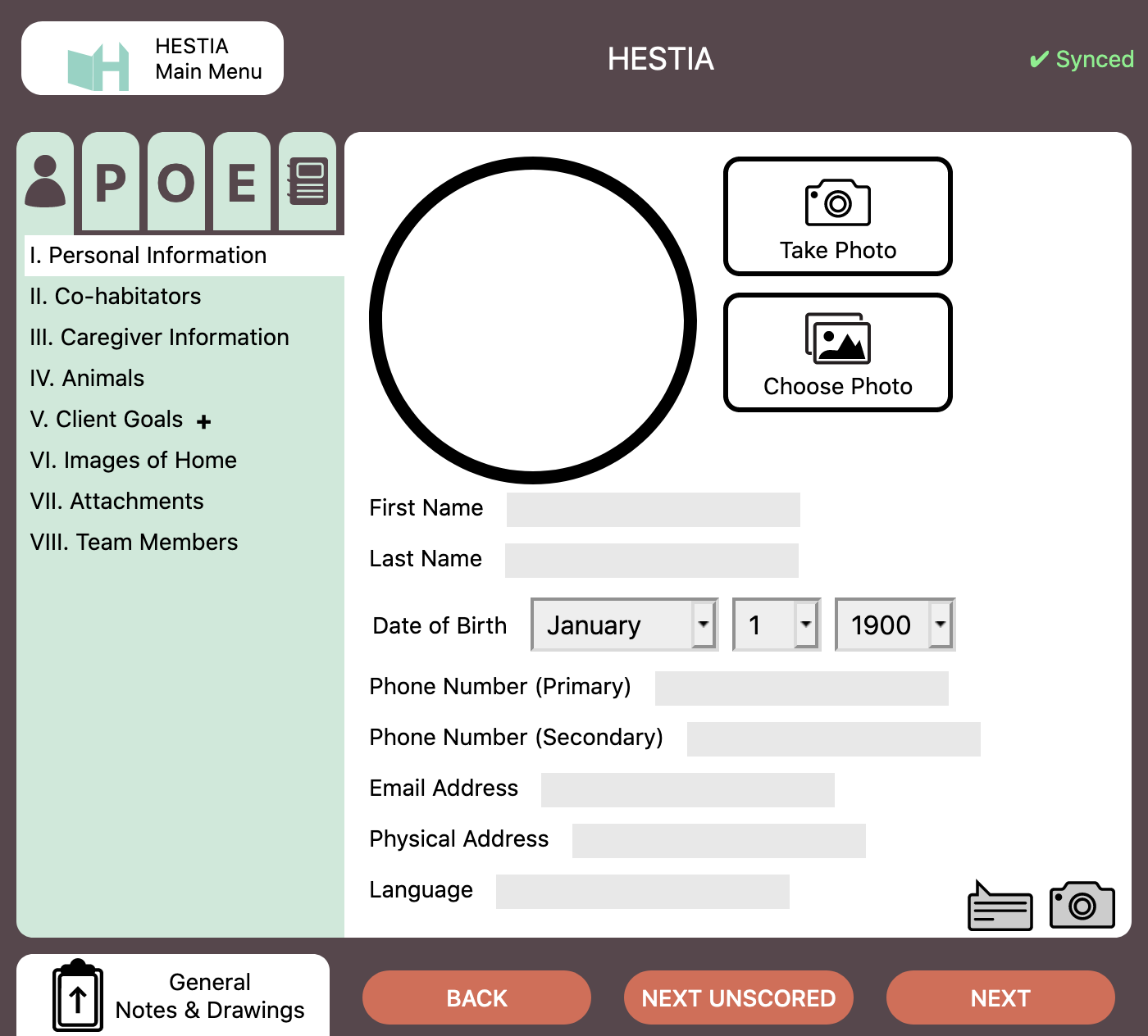At the R2D2 Center we employ some key strategies across our projects. Some strategies are innovations that we have created in one or another R&D activity and found them to be fundamental techniques that we transfer to related projects. Our methods are philosophically important to us, like including people with disabilities and other stakeholders in our research, development, service, and training activities. Here are a few of our cutting-edge methods.
Trichotomous Tailored Sub-branching Scoring (TTSS)
TTSS is a computer-based measurement scaling system used for quantifying observational or self-ratings. TTSS is eloquent in its simplicity, yet powerful in its efficiency and methodological savvy. TTSS quantifies responses designed as hierarchical question taxonomies and is used as a foundation for many of the R2D2 Center data collection applications. A brief explanation:
-
Trichotomous: All items are scored using a trichotomous scale; 0, 1, 2. For a given question, a score of 0 is given if NO criteria are met and a score of 2 is given if ALL criteria are met. A score of 1 is given when only SOME of the criteria are met, or if the user is unsure.
-
Tailored: In addition to the three score-responses, variants of “not-applicable” and “not examined” are provided as unscored responses to customize the assessment to individuals in their particular contexts. The TTSS system omits all items with these responses from the total scores. Thus, the results obtained from a TTSS-based assessment are comprised of the items specifically relevant to the individual, thereby tailoring the assessment according to an individual’s particular needs and contexts.
-
Sub-branching: Sub-branching is a unique feature of a TTSS-based taxonomy, which allows for detailed analysis, while also allowing for a quick and efficient scoring process. If a score of 0 or 2 is given for an item, the TTSS process moves to the next branch of the same level within the taxonomy. If a score of 1 is given, the taxonomy opens sub-branches, which allow for a more detailed analysis. This technique not only optimizes efficiency, but it also increases the reliability of ratings by allowing a user to branch into more detail when needed.
-
Scoring: All items prompt scores which promotes careful responses. However, only endpoint questions are truly tallied. These produces quantified scales for comparison between administrations.
-
-
The Person-Environment-Occupation Model (PEO)
The PEO model describes occupational performance in three separate, yet mutually interdependent dimensions. To fully grasp an individual’s situation and needs, researchers, practitioners, and evaluators must recognize the context of an individual’s abilities and disabilities (Person), in their context (Environment), embedded in an activity (Occupation).

Figure 1: Graphic showing the person environment and occupation model used in HESTIAView EqTD To ensure that we have a comprehensive understanding of our users and target populations, many R2D2 Center projects engage aspects of the PEO model. Our AccessRatings for Buildings Project (ARB) focuses on the public Environment, and, with AccessPlace, a Person’s relationship to that environment. HESTIA: Home Evaluation System with a Triangulating Integrative Approach (A Home Evaluation App) considers a person’s disabilities and abilities when evaluating occupations in the home environment of an individual.
-
Personalization
We understand that there are no “average” people; every person has assets, challenges, and needs that are unique to them as an individual. Especially among people with disabilities, one-size-fits-all solutions are unsuitable. At the R2D2 Center, using concepts from Bayes Theorem, we incorporate personalization strategies into all of our projects, enabling individuals to define how they differ from the mean, tailoring their experience to them. Our AccessRatings for Buildings Project (ARB) is a great example where the AccessPlace app integrates what we call PAI for Personal Accessibility Information to generate reports that match a person’s specific needs.
-
Participatory Action Research (PAR)
We deploy several methods specific to the inclusive participation of end-users and other stakeholders of any of our projects. We generally describe this approach as PAR but use several methods to elicit design needs, preferences, and feedback for those who have a stake in the outcomes of the projects. Our participatory strategies include Interviews, Surveys, Usability Testing, Focus Groups, and Embedded Stakeholders in our projects. Depending on the project any one or more of these methods are included as a core component. We consider this approach universal and mandatory to our research, development, service, and training work. We constantly are improving our design and implementation through participatory action. Our HESTIA: Home Evaluation System with a Triangulating Integrative Approach (A Home Evaluation App) project has many examples of focus group and embedded PAR methodology used in our R&D.
-
Accessible and Universal Design (UD)
Optimal accessibility is not only an overt goal, but a primary goal of many of our projects. Universal design is the method we use 1) when we generate new project plans and 2) drive continuous improvements across all of our activities and projects. View virtually any of our projects on this website to see how we motivate ourselves using a UD philosophy. Examples of our attention to UD include our Assistive Technology and Accessible Design Certificate (ATAD) and our operationalization of EqTDs (Equivalent Text Descriptions) on this website.
For example, the PEO figure above links to an EqTD as seen on this page.
-
IMPACT2 Model
Our IMPACT2 Model is unique as it places our work in the context of human function. Assistive Technology in one of six interventions and Universal Design, one of two pre-interventions. All of our interventions are built to improve or maintain the functional performance of individuals with disabilities.

